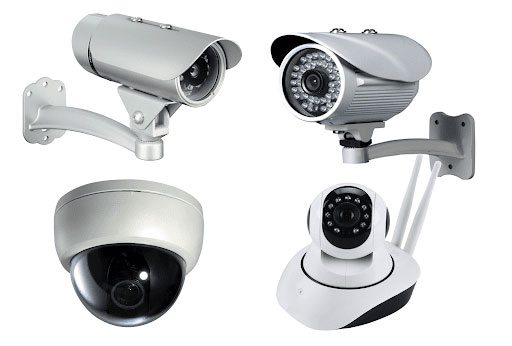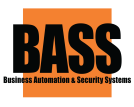
When deciding on a Video Surveillance System, one must consider the Architecture of the system :
Architectures are based on 5 fundamental decisions:
Encoding – Where is the video encoded? Camera? Encoder? Recorder?
Storage – Where is the video stored? Camera? Recorder? SAN? NAS? Cloud?
Analytics – Where is the video analyzed? Camera? Recorder? Server? Cloud?
Management – Where is the video managed? Camera? Recorder? VMS? Cloud?
Monitor – Where is the video monitored? PC / workstation? PVM? Video wall? Phone?
Encoding
All surveillance video is encoded.
Surveillance video is going to be encoded, i.e., the native analog signal will need to be digitized such that it can be displayed, analyzed and transmitted amongst computers.
The tradeoffs of the 3 typical locations are:
Camera: Encoding in the camera increases costs relative to analog cameras. Also, encoding in a camera decreases the perlink maximum transmission distance of the video signal. However, encoding in the camera supports analytics and advance features because there is essentially a full computer onboard.
Encoder: Allows the use of any analog camera with a VMS or recorder. Encoders also spread out the cost of additional encoding hardware costs over multiple cameras. Encoders require a separate recorder for video storage.
Recorder: Provides a single-box for encoding and recording. All cameras must be directly cabled, or home run, to the recorder for encoding, which can increase costs of installation. This is more likely to be appealing in small systems.
Storage
Surveillance video must be stored in order to review past events. Encoded video streams are saved as video files, where they can be selected and played back in client decoding software. Storage can be located in cameras, recorders, network-based, or in the cloud.
The tradeoffs of the 4 typical locations are:
Camera: Storing video in a camera can eliminate the need for a separate recorder. However, recording storage is limited based on the storage type supported (e.g. microSD, SSD, Flash). The cost per Byte is higher than using a recorder.
Additionally, if a camera is damaged or stolen, loss of recorded video is likely.
Recorder: Storing video in a recorder can spread the cost of storage across multiple cameras, which reduces the cost per byte compared to camera storage. Also, this can add options for storage redundancy by using RAID. However, isolating storage in non-centralized recorders is inefficient and risks significant video loss.
NAS: Storing video in a NAS is a low-cost option of network-attached storage for small scale systems. Storage speed and redundancy are lower than Recorder or SAN-based systems.
SAN: Storing video in a SAN offers large scale expansion and supports flexible design architectures. Adding secondary hardware for storage will typically significantly increase costs when compared to adding more storage in the primary recorder.
Cloud: Storing video in the Cloud decreases (or eliminates) the need for recorder storage. However, Internet upload use increases and video recording can be lost during an Internet outage. There are also practical limitations to the number ofcameras that can upload video to the cloud, based on Internet bandwidth. Once the video is uploaded to the cloud, it can typically be viewed directly without connecting to the local cameras/gateway.
Analytics
Surveillance video can be analyzed by software to determine if it contains motion, a person, vehicle, recognizes a face, reads a license plate, etc. Analytic information is associated with the video stream and can be used to display bounding boxes, trigger alarms, or is saved to increase efficiency when searching for video.
The tradeoffs of the 4 typical locations are:
Camera: Camera-based analytics can be more accurate because they can be performed on low compression, high-quality video, before encoding. However, powerful processors required for accurate analytics have typically been limited to expensive cameras and/or specialized capabilities (e.g. LPR/ANPR).
Recorder: Analyzing video on a recorder generally allows for a more powerful processor than a single camera could offer, which is used for all cameras connected to the recorder. Also the analytics are immediately integrated with the viewing software. However, recorder manufacturers do not want to over-specify the hardware to keep the recorder’s price low, and often the analytics are limited.
Server: Dedicated analytics appliances are built to have increased analytics processing than Recorders, and typically include higher-spec components. However, server-based analytics add significant cost and can be noisy and power-intensive.
Cloud: Analyzing video in the Cloud should eliminate the resource limitations of recorders or servers, and provide high accuracy analytics. However, cloud processing, specifically public cloud hosting (Amazon, Google), can be very expensive.
Cloud-based analytics services typically cost between $25-$50 per camera per month. Moreover, Internet upload use will increase and can limit the number of cameras that can be analyzed.
Management
Surveillance system management ensures only approved users can view video and it is stored for the correct number of days. It can also monitor camera configuration and system health.
The tradeoffs of the 4 typical locations are:
Camera: Camera-based management provides full system setup without purchasing any servers or software. Additionally, camera manufacturers typically provide a free software configuration tool for managing settings. There are cost savings to not purchasing a recorder/VMS, but this is uncommon outside of very small systems due to increased complexity.
Recorder: This offers decreased management complexity by supporting multiple cameras through a single box, typically with a lower cost than VMS. Recorders may also have feature limitations compared to VMS. Multi-recorder systems typically require each server to be managed as a standalone system or using a VMS client to connect to each recorder.
VMS: This offers a single point of management across multiple servers/recorders, often with a main management or directory server. Some VMSes also ofter management redundancy, supporting backup servers if the main management server fails.
This comes with an increased cost compared to standalone recorders.
Cloud: This typically offers central global management as a standard feature, while also offering remote access to cameras and servers through proxy/direct NAT connection. While some VMSes offer this service with no subscription cost, cloud management is typically associated with VSaaS subscription fees. In 2020 many cloud systems have limited features compared to traditional VMSes.
Monitor
Surveillance video is viewed by many user types (e.g. security guards, investigators, facilities managers) for live monitoring and searching for incidents. Surveillance video is typically displayed by software that can be run on a PC or phone, however standalone hardware decoders can also be used.
The tradeoffs of the 4 typical locations are:
PC/Workstation: The most common method for viewing video, a software or web-based application authenticates users and decodes video. PC hardware costs may increase significantly as the number of cameras viewed increases, as some applications recommend GPU hardware accelerated decoding.
Video Wall: Multiple screens are used to dynamically view cameras across 1 or multiple panels. Hardware-based video walls are very expensive and required specialized techs to install. VMS client-based video walls are less expensive but still require expensive GPU drivers and additional setup.
Phone: Offering fewer features than PC or Video Wall, phone clients typically support 1-4 live simultaneous live views, and basic recording search functionality. Many phone clients do not offer analytic searching and have limited video export features.
Public View Monitors: Installed in locations viewable by the general public (e.g. main entrances, POS terminals), these raise awareness of non-security users that an area is monitored. Typically these use hardware decoders or small PCs, and display 1-4 cameras.
Common Surveillance Architectures
The 3 most common surveillance architectures in 2020 are SMB, Enterprise, and Closed-Cloud.
Small/Medium Business (SMB) systems typically use low-cost IP cameras with recorder-based storage. Recorders used in these systems are also generally low-cost and are used for management, but do not offer analytics. PCs/Workstations are used for viewing live and recorded video:
Enterprise systems generally have higher counts (100+) of IP cameras with server-based storage and use a VMS for management.
Centralized server-based analytics are more common than camera or cloud-based analytics and monitoring to consist of PCs, video
walls, mobile and public view monitors:
Closed cloud systems commonly include many features in the IP cameras at the edge, including 15-120 days of storage. AI analytics and management are provided in the cloud. Monitoring is typically provided by a web-based viewing client and mobile app.

